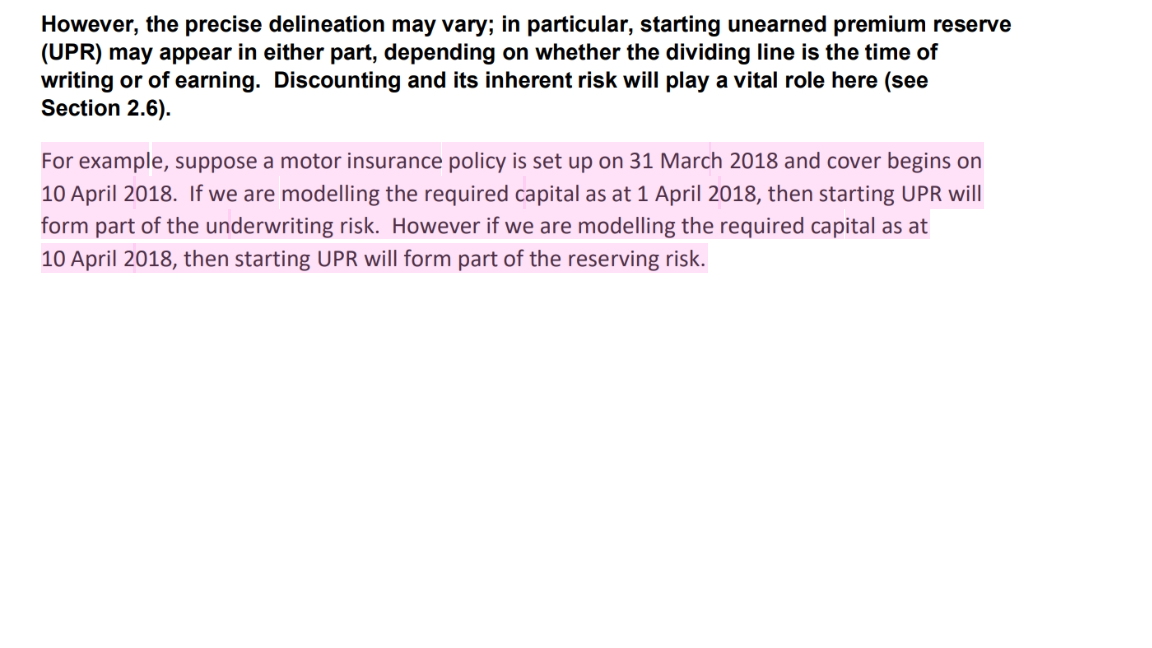On page 937 when discussing about insurance risk, the explanation of the book says:

I agree on the underwriting risk (premium risk) that booking the capital too early even before the insurance starts.
But I don't understand the reserving risk if modelling required capital at 10 April 2018, which I believe the correct way to set up UPR?
Thanks

I agree on the underwriting risk (premium risk) that booking the capital too early even before the insurance starts.
But I don't understand the reserving risk if modelling required capital at 10 April 2018, which I believe the correct way to set up UPR?
Thanks
